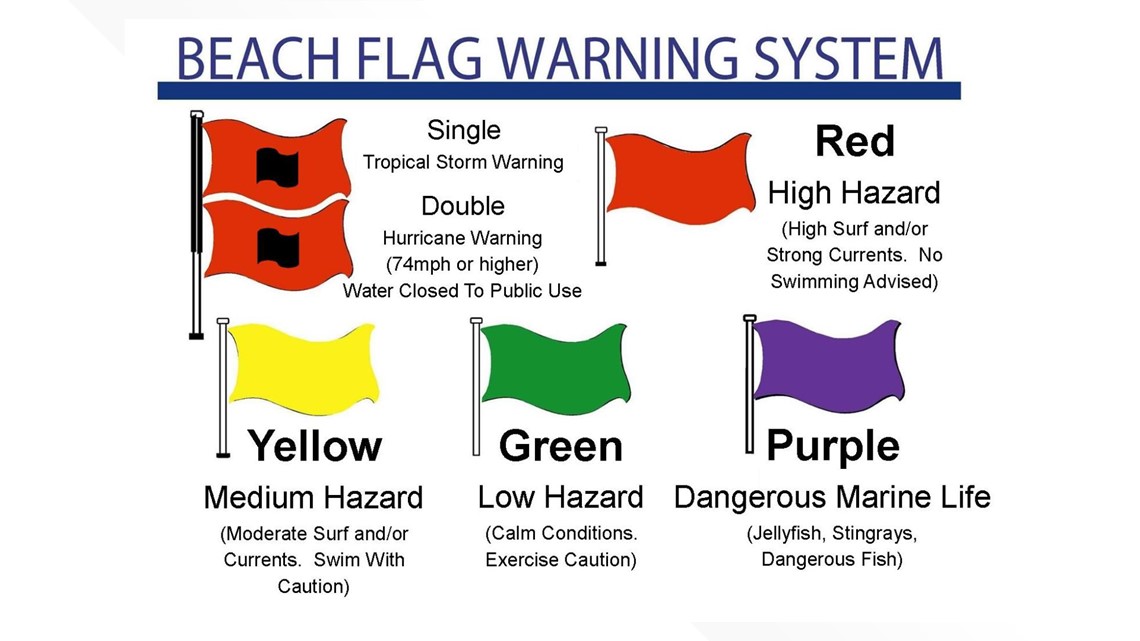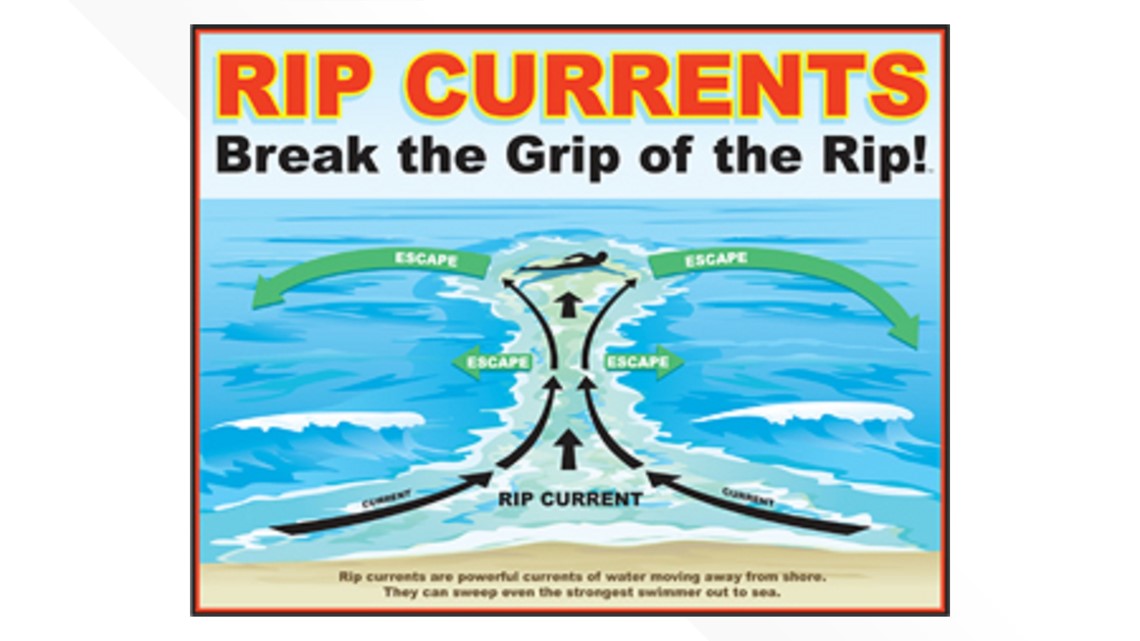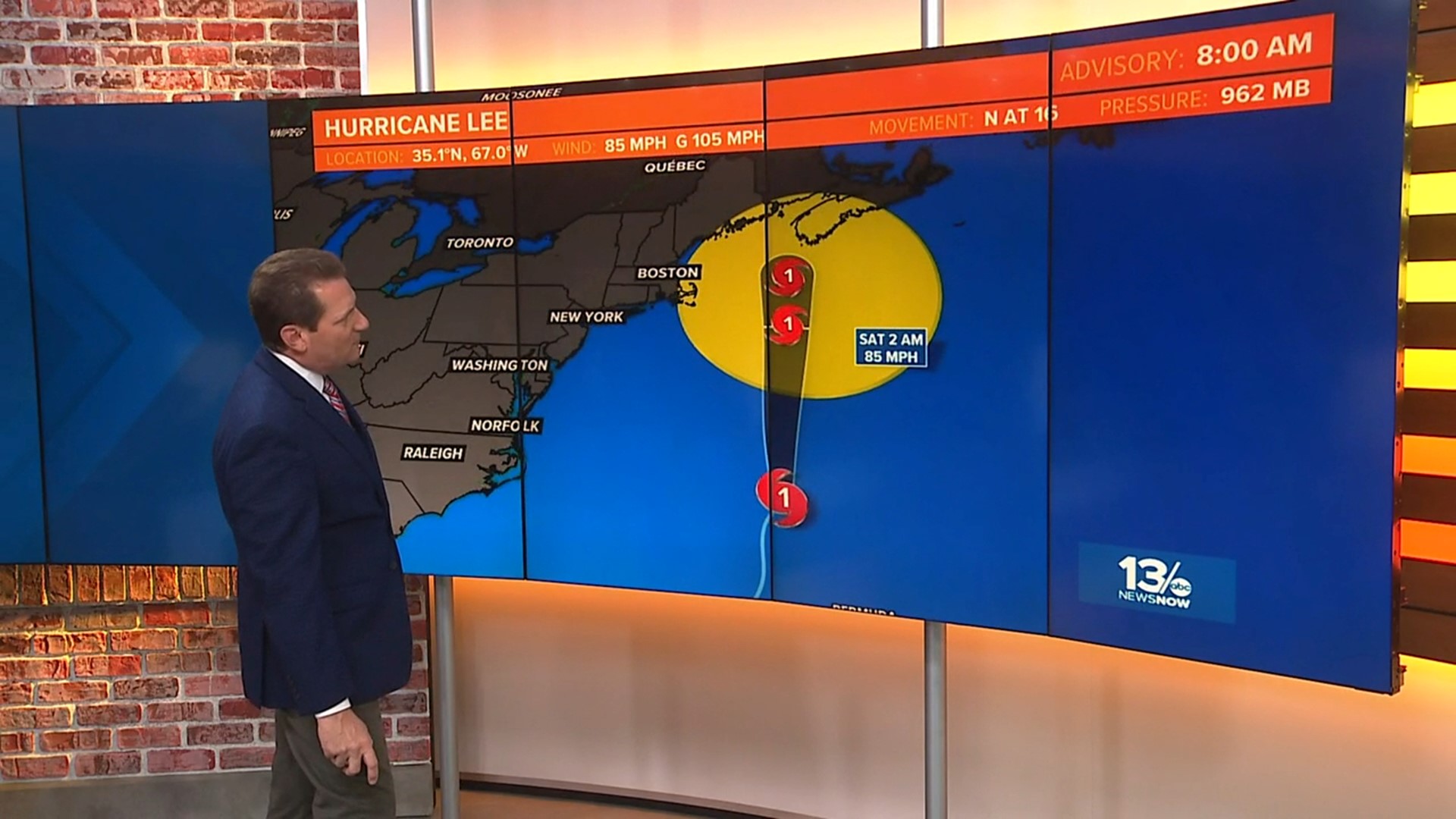VIRGINIA BEACH, Va. — As Hurricane Lee moves through the Atlantic Ocean, waves along the shorelines of Virginia Beach and the Outer Banks are expected to reach eight to 11 feet.
The storm is several hundred miles east of southeastern Virginia and northeastern North Carolina but is causing dangerous swells and rip currents along the coast, which will last through the weekend.
The waves in the ocean will build to eight to 11 feet, before gradually diminishing to four to six feet by Saturday night.
Waves in the Chesapeake Bay are expected to reach four to five feet through Friday, while they will be two to three feet in rivers nearby and one to two feet in the Currituck Sound. Waves may linger at three to four feet across the lower bay through Saturday.
Tides are running higher than normal and minor tidal flooding is possible around Hampton Roads with the Friday morning high tide. Minor tidal flooding is likely at the Outer Banks for the next few high tide cycles.
As of Friday morning, Lee is west-northwest of Bermuda with winds of 85 miles per hour. The storm is moving north at 15 miles per hour and being picked up by the cold front that moved through Hampton Roads early Thursday. As Lee encounters the cooler waters off the New England coast and wind shear, it will continue to slowly weaken.
How to avoid getting caught in Hurricane Lee rip currents
In a news release Wednesday, Coast Guard officials warned beachgoers to use extreme caution at the beach, especially for kids and inexperienced swimmers.
“Rip currents are a hidden threat to even the most experienced swimmers," Capt. Kate Higgins-Bloom, commander of Coast Guard Sector Delaware Bay, wrote. "With the increased number of tragedies following Tropical Storm Idalia over Labor Day weekend, we urge everyone to remain cautious. If you’re spending time at the shore over the next few days, keep yourself and loved ones safe by paying close attention to surf conditions and warning signs posted by local authorities.”
The U.S. National Weather Service defines rip currents as currents of water flowing away from the shore. Certain conditions can cause these currents to move faster. As of Aug. 31, NWS data shows that 76 people have died in surf zones so far this year. The National Weather Service and Coast Guard have some tips for avoiding and surviving rip currents.
Know the warning flags
Some beaches will have warning flags to help beach-goers know the swim conditions. According to the U.S. Coast Guard, there are four types of flags you should know about:
- Green: This means the conditions are calm.
- Yellow: This means the surf or current is moderate. Swim with caution.
- Red: This means swimming isn't recommended because of high surf or strong currents.
- Purple: This means there's dangerous marine life. Some examples are jellyfish, stingrays and dangerous fish.


Spotting a rip current
The Coast Guard says you can find most rip currents by looking for signs of a dark gap that looks like a path through the surf. The water will look darker in the rip current.
If you have polarized sunglasses, they may come in handy.
What to do if you get caught
The NWS recommends staying calm when you get caught in a rip current.
Don't try to swim against the current nor swim to shore. Swim along the shoreline until you can escape the current. When you're free, swim at an angle away from the current toward the shore.
If you need help, face the shore and yell or wave.


Other tips
Check the weather before you go to the beach. 13News Now has the latest forecasts and an interactive radar map on our website and inside our app.
The NWS recommends swimming with a friend. If you have a problem while swimming, the other person can help, and vice versa.

